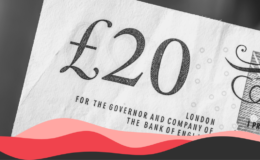- Lough Neagh faces a significant ecological crisis that puts a lot of animal and plant life in peril, and fixing this – if it does get fixed – could take decades.
- NI has no independent environmental protection agency, whereas many other European countries do, albeit these can have close links to government.
- Mid and East Antrim Borough Council recently gave planning permission for an oil terminal at Cloghan Point, although this does not represent a pattern of behaviour by councils generally.
- FactCheckNI could not find a definitive, objective way to measure whether NI has the “least protected environment in Europe”. Perhaps that’s just a matter of opinion.
In a post on social media on 12 September, campaign group Save Our Lagan claimed:
“NI is the least protected environment in the Europe: Lough Neagh is dying. We have no ind EPA, no government. All the while, local councils are signing off on “huge fossil fuel projects that lock us into climate-burning fossil fuels for decades more”.”
This contains several claims, some of which are statements of fact, and some which are opinions:
- NI has the least-protected environment in Europe
- Lough Neagh is dying
- NI has no independent EPA (meaning environmental protection agency)
- Local councils are signing off on “huge fossil fuel projects that lock us into climate-burning fossil fuels for decades more” (which is quoting this article in Belfast Live)
- Is Northern Ireland the least-protected environment in Europe?
FactCheckNI searched for a definitive, standardised ranking of environmental protections but failed to find one. If any readers can point us in the right direction, please do.
The closest thing we found to something measurable was the Environmental Performance Index (EPI) from Yale and Columbia universities. It made no mention of NI, only the UK (which was in 2nd place among all countries), while the creators of the EPI themselves not only acknowledged that their ranking model was not definitive, they created a tool to allow people to come up with their own rankings based on the available data.
Without a way of objectively making comparisons, this headline claim is unsubstantiated – or, simply, an opinion.
- However, the other three are all statements of fact.
Lough Neagh is facing a significant crisis, including the blooming of toxic blue-green algae. To say that the lough “is dying” is to use emotive language. However, the body of water is currently toxic to animals and humans and its biodiversity is under threat.
Northern Ireland has a dedicated Environment Agency, but it works entirely within the Department of Agriculture, Environment and Rural Affairs so is not independent.
NI also falls under the remit of the Office for Environmental Protection (OEP, which covers England as well) but, while the OEP is independent, it only has effective powers over public bodies (and some utilities firms, with regards to their legal commitments) and lacks enforcement over private businesses and citizens. Taken altogether, it is accurate to say that NI has no independent environmental protection agency.
At least one local council – Mid and East Antrim Borough Council – has recently given the green light to a major fossil-fuel project. Another big initiative is also on the cards in that council area, but it was given the initial thumbs up before ultimate responsibility for planning was handed to councils. That’s not quite the same as councils, plural, continually signing off on “huge” projects. Based on the evidence we saw, this claim is exaggerated, but not wholly inaccurate.
Those are top lines from this fact check. If you want to dive into the detail about why all this is the case, read on. Now would be a good time to boil the kettle.
- What is environmental protection?
Environment protection refers to maintenance and repair of the natural environment by individuals, organisations and governments.
The Environment Act 2021 was a UK-wide piece of legislation that sets various environmental targets and commits to certain measures to improve the UK’s natural environment. The Act defines environmental protection as:
- protection of the natural environment from the effects of human activity;
- protection of people from the effects of human activity on the natural environment;
- maintenance, restoration or enhancement of the natural environment;
- monitoring, assessing, considering, advising or reporting on anything in paragraphs (a) to (c).
- Legislation in Northern Ireland
The Act includes a few sections dedicated to NI. This includes commitments to make plans to improve the environment in NI, to enact those plans, and to gather and analyse adequate data to monitor the success of those plans.
At the time it was passed, Northern Ireland had no specific environmental/climate change legislation of its own. This changed in early 2022.
Two competing pieces of legislation had gone through several stages of progress in Stormont – a bill tabled by then leader of the Green Party, Clare Bailey, with an aim of achieving Net Zero by 2045 and one brought by the then-Environment Minister Edwin Poots that originally wanted to reduce local greenhouse emissions by 82% by 2050.
Ultimately, after some changes, the latter bill became law. When the Committee for Agriculture, Environment and and Rural Affairs assessed Mr Poots’ bill it noted that the draft legislation was “perceived by some stakeholders to be a reasonable, sensible and evidence-based goal as it is based on the recommendation of the United Kingdom Committee on Climate Change as to what is feasible and deliverable for Northern Ireland” while “[many] other stakeholders consider that the target is unambitious and insufficient to deliver the changes required to reverse Climate Change.”
When it became the Climate Change Act (Northern Ireland) 2022, it included a target of net zero CO2 emissions by 2050.
The Act includes no mention of an independent environmental protection agency. It does mandate the Department of Agriculture, Environment and Rural Affairs to seek advice from the Climate Change Committee (CCC) when it plans to make regulations under any provision of the Act. The CCC is an independent, UK-wide agency.
- Independent agency
The Northern Ireland Environment Agency (NIEA) is a body that works within DAERA. Its “primary purpose is to protect and enhance Northern Ireland’s environment”. However, it is not independent.
In fact, NI has no dedicated independent environmental protection agency. But that’s not the end of the story.
The UK’s Environment Act 2021 established the Office for Environmental Protection (OEP). It is an independent, non-departmental body tasked with holding public bodies to account, and its remit covers England and Northern Ireland. It is able to scrutinise environmental improvement plans and targets, environmental law, advise government on environmental law and enforce against failures to comply with environmental law. Organisations and individuals it can hold to account include:
- government departments
- government ministers
- regulators
- local authorities
- some private bodies, such as water companies – but only in respect of their public powers and duties
However, it arguably lacks the sweeping powers a full independent environmental protection agency would have, because it lacks oversight of businesses and private citizens.
Northern Ireland Environment Link (NIEL), a forum for organisations interested in NI’s natural and built environment, criticised the 2021 Act for this reason, saying:
“[The Act does not] establish an independent environmental protection agency to provide oversight of individuals and businesses.
“Whilst there are a number of hugely welcomed provisions, ultimately the Act is a framework piece of legislation and so it must be supported by additional laws for protecting nature.”
It is fair to say that NI has no independent environmental protection agency – and, given the ongoing collapse of the NI Assembly and Executive, that it has no government.
Westminster, and the Northern Ireland Office in particular, do have political oversight of NI but currently civil servants are in charge of Stormont departments.
One further question is whether the absence of an independent environmental protection is unusual? The answer, broadly, is yes. The EPA Network is an informal group of such agencies across Europe, and 37 total countries are represented – including England (note that this is the Environment Agency, rather than the OEP), Scotland, Wales and Ireland, but not NI. On the other hand, the degree to which these agencies are fully independent and the scope of their enforcement powers may vary. Previous research (albeit dating from 2015) suggests that many of these agencies are quasi-independent, meaning they have ties to government departments and/or rely on government for funding.
- Lough Neagh
Lough Neagh is undergoing a significant environmental crisis, which includes a large bloom of toxic blue-green algae.
In August, DAERA and NIEA warned about the dangers posed by algal blooms and urged the public to “be blue-green algae aware” and to report any sightings to officials. Describing the dangers, the department said:
“The excessive toxins produced during a bloom can potentially be harmful to public health. Blue-green algae can harm people, producing rashes after skin contact and illnesses if swallowed, or can potentially kill wild animals, livestock and pets if ingested. Algal blooms also block sunlight from reaching other plants in the water, use up oxygen in the water at night and when decaying and hence can suffocate fish and other creatures.”
Concerns about this have been raised by local political parties including the DUP, Sinn Fein, Alliance and UUP.
Indeed, the SDLP sought to recall the Assembly over this crisis at the same time as “proposing the nomination of Ministers to urgently establish an independent Environmental Protection Agency”.
In the absence of elected representatives, senior officials gave a media briefing on the scale of the crisis at the end of last month. The Belfast Telegraph reported that Pieter-Jan Schön, director of the Environment and Marine Sciences Division in the Agri-Food and Biosciences Institute (AFBI), said:
“Basically all the main species in the lough are decreasing. In particular with pollan, there is a complete collapse of young fish.”
The newspaper also reported that Mr Schön said: “This is a long-term problem which requires long-term solutions,” and reaching safe levels “will require at least 20 years”.
The original claim said that “Lough Neagh is dying” and, given the scale of the crisis and its potential effects on biodiversity in the lough, this turn of phrase does not seem excessive.
- Councils and fossil fuels
In 2012, planning permission was awarded for several gas underground caverns in Islandmagee. This is now under the auspices of Mid and East Antrim Borough Council, although that council was not created until 2014 and planning permission was not devolved from Stormont to local authorities until the following year.
In 2021, DAERA granted licence for the construction to proceed – a decision that was subject to legal challenge from environmental groups who are worried the caverns will lead to a “dead zone” where no marine life could survive. This challenge failed in late August.
Last month, the same council gave planning permission for an oil terminal at Cloghan Point, outside Whitehead.
Ongoing court cases could still impact these developments but, regardless, it is fair to say that significant fossil-fuel project can be met with council approval and, indeed, this has happened in recent weeks.
However, it is perhaps an exaggeration to say that a plurality of councils are planning to lock NI in to fossil-fuel use for decades to come.
- Criticisms
As well as its own Climate Change Act, Northern Ireland seemed to finalise an Environment Strategy in March 2022. However, while this was announced by then-Minister Edwin Poots, it never received Executive approval and the final strategy has yet to be published.
Two months earlier, the draft strategy was considered by the Environment Committee, which received commentary from officials on the strategy’s aims including comparisons with other parts of the UK. Minutes of evidence for this meeting were not published by the NI Assembly but the BBC reported that this official guidance said targets in the strategy were considerably less ambitious than equivalent targets in the rest of the UK and in Ireland – including in areas like reforestation, care of peatlands, water quality and recycling.
Friends of the Earth says that NI has “the least protected environment in the UK and Ireland”, highlighting the lack of an independent environmental protection agency and a planning system that is light touch, environmentally speaking, as major problems.
The RSPB NI criticised DAERA this summer after it failed to meet a binding obligation to publish its Environmental Improvement Plan (EIP). This month, DAERA wrote a letter to the OEP saying it would be “inappropriate” to publish this plan, due to the Stormont collapse.
- Trying to measure this all
The question, then, is whether it is fair to say that “Northern Ireland has the least protected environment in Europe”.
Is this a measurable, verifiable assertion – or is it just an opinion? That itself is a simple question with no clear-cut answer.
NI’s environmental protections have been criticised in many quarters, including from government officials and leading green organisations.
Creating an overall ranking of places by levels of environmental protection do exist. But are they conclusive?
- Rankings
The RSPB’s statement criticising DAERA also said that “Northern Ireland has been ranked the 12th worst out of 240 countries for biodiversity loss”.
A variety of rankings exist for different aspects of environmental protection. The figure the RSPB is referring to comes from a 2020 report from the Natural History Museum, in conjunction with RSPB, looking exclusively at biodiversity loss.
Out of the 240 countries examined, the UK was 12th worst overall. When divided up into constituent nations, Northern Ireland itself was ranked 12th worst overall, below both Scotland (28th from bottom) and Wales (16th) but above England (7th worst). Ireland was one spot above NI, in 13th.
In September, the RSPB published State of Nature 2023, which looks at UK biodiversity and has an offshoot paper dedicated to NI which says that “Northern Ireland is now one of the most nature-depleted countries on Earth.”
The problem here is that “environmental protection” itself involves a bunch of different, interconnected things such as biodiversity, tree coverage, water quality, recycling efficacy, emissions levels, the direction of travel for emissions, effectiveness of disposal of animal waste, and on and on.
Tying all these things together so that different countries can be compared to one another is tricky.
- Attempt at an aggregate
One measure which tries to do something like this is the Environmental Performance Index (EPI), put together by Yale and Columbia universities in the USA, which “ranks 180 countries on climate change performance, environmental health, and ecosystem vitality.”
This does not include a ranking for Northern Ireland but does for the UK and, according to the most recent league table (2022), the UK is the second best performer out of the 180 countries assessed.
However, Northern Ireland isn’t even mentioned in the full report and, as NI is a relatively small part of the UK, it is impossible to infer anything about its own performance based on this measure – and, taking a close look at Lough Neagh and its importance to NI’s natural environment, saying that NI currently comes second only to Denmark in global environmental performance would be a hard sell.
As well as an overall ranking, all countries are ranked on 54 more specific criteria (for instance, the UK ranks 140= on the EPI’s Biodiversity Habitat Index).
The overall EPI ranking is based on a weighted aggregation of all of a country’s individual scores. How good is this model? That’s up for debate – a debate encouraged by the EPI creators themselves, who have actually built a tool for changing the weights attached to different categories so people can come up with new EPI scores and rankings, saying:
“The EPI has given careful consideration to the policy objective, issue category, and indicator weights used in the 2022 report. That said, we encourage readers to treat these weights as suggestions, and to explore what happens to scores when weights are adjusted.”
In other words, they believe their measures are sound but are fully aware that weighting all these different factors into one combined score is subjective – and certainly not definitive.
- Conclusion
The original claim made several assertions of fact, which are backed by evidence.
However, the headline claim – that Northern Ireland has the least-protected environment in Europe – lacks any standardised, objective, broadly-accepted way to be verified as either accurate or inaccurate.
It’s just a matter of opinion. Whether you share that opinion, after looking at all the available information, is up to you.




